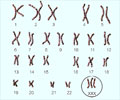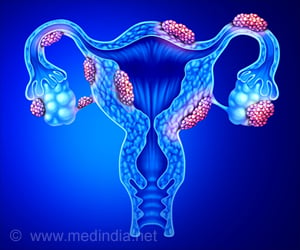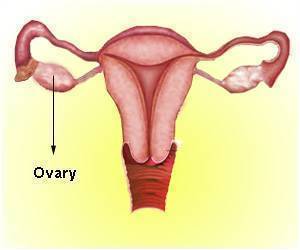A University of Warwick physicist has uncovered how female cells are able to choose randomly between their two X chromosomes and why that choice is always lucky.
A University of Warwick physicist has uncovered how female cells are able to choose randomly between their two X chromosomes and why that choice is always lucky.
Human males have both a X and a Y chromosome but females have two X chromosomes. This means that in an early stage in the development of a woman’s fertilised egg the cells need to silence one of those two X chromosomes. This process is crucial to survival and problems with the process are related to serious genetic diseases.Both X chromosomes in a cell have a suicide gene called XIST which, if activated, seals the chromosome behind a barrier of RNA preventing the activation of any other gene. Researchers believe that this suicide gene can be itself blocked by a plug of proteins forming on top of its specific location on the chromosome but they had little idea as to why this should happen randomly to one X chromosome’s gene and not the other.
Scientists are extremely uncomfortable with this randomness and have sought a clear scientific reason as to why one X chromosome was switched off rather than the other. The observations also seem to run counter to the usual idea that the biological mechanisms evolve in ways that allow a "best" choice to be made between things rather than a random one.
Now researchers led by University of Warwick physicist Dr Mario Nicodemi have explained how this randomness occurs and why that it is beneficial. This will help understand the problems of a small number of women who unusually don’t have a completely random distribution of X chromosomes but the explanation may have much wider implications as at least 10% of our genes may behave in similar ways as mechanism that "chooses" between X chromosomes. Examples of this range from the immune system to our olfactory apparatus.
Coming at the problem from the perspective of a physicist Dr Nicodemi has found an explanation for the random selection based on thermodynamics. Research has already shown that at the key moment in this process both X chromosomes are brought close together within the cell. The Warwick researcher paper says that what happens next is that material for a "protein plug" then begins to gather around both of the XIST suicide genes on each X Chromosome.
This starts a race between the two build ups of protein. Inevitably one of these two nascent protein plugs narrowly wins that race and reaches an energy state in which it can pull together all the material building up in both plugs into a single protein plug. That single plug then closes off one of the XIST suicide genes allowing its host X chromosome to continue to operate. However the other XIST suicide gene is now freed to activate and shuts down its X chromosome.
Advertisement
The mechanism means equal numbers of both the maternal and paternal X chromosome are preserved in the gene pool and the resultant population thus has more chance of surviving any biological threat targeted at a single version of the X chromosome.
Advertisement
JAY/S








